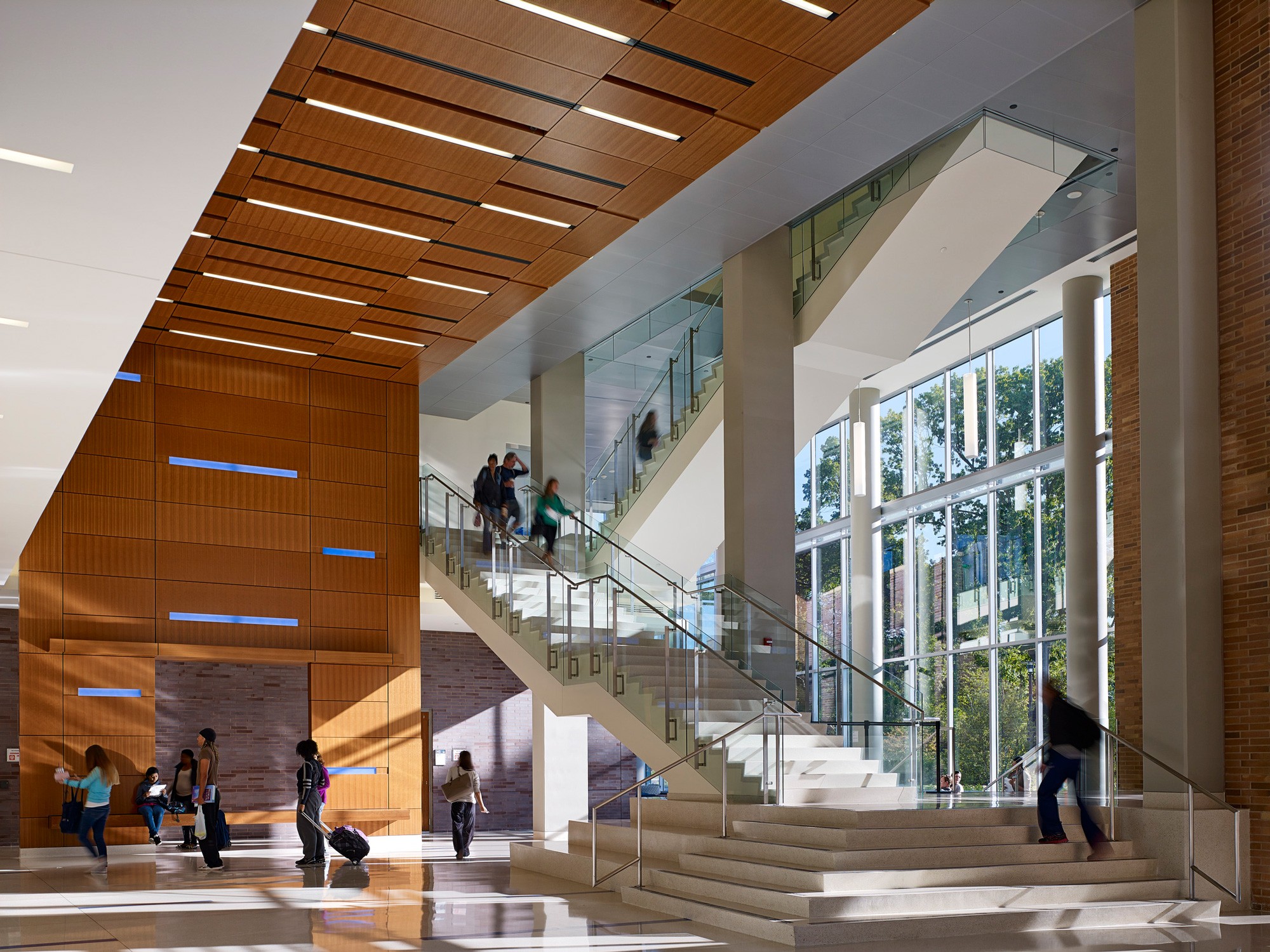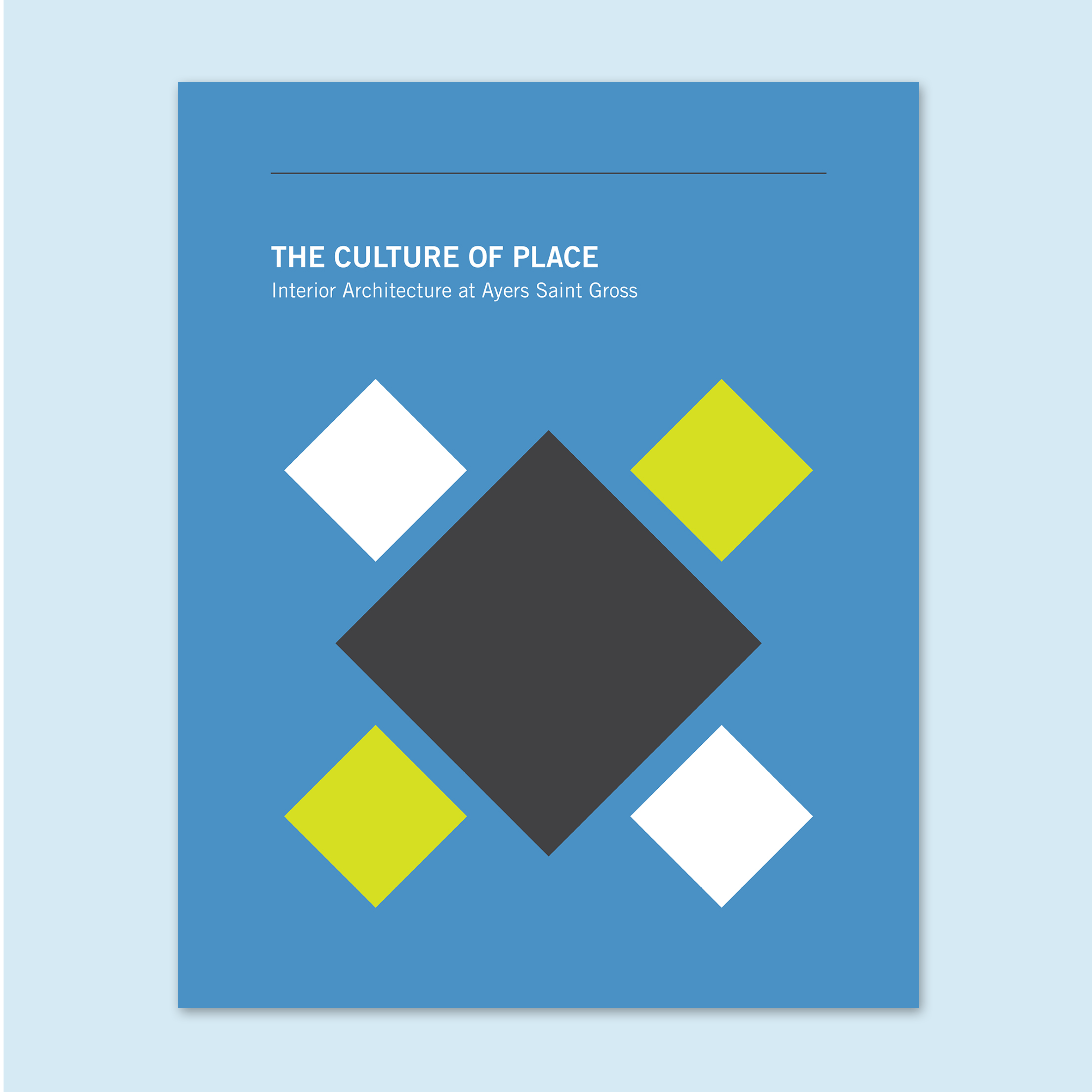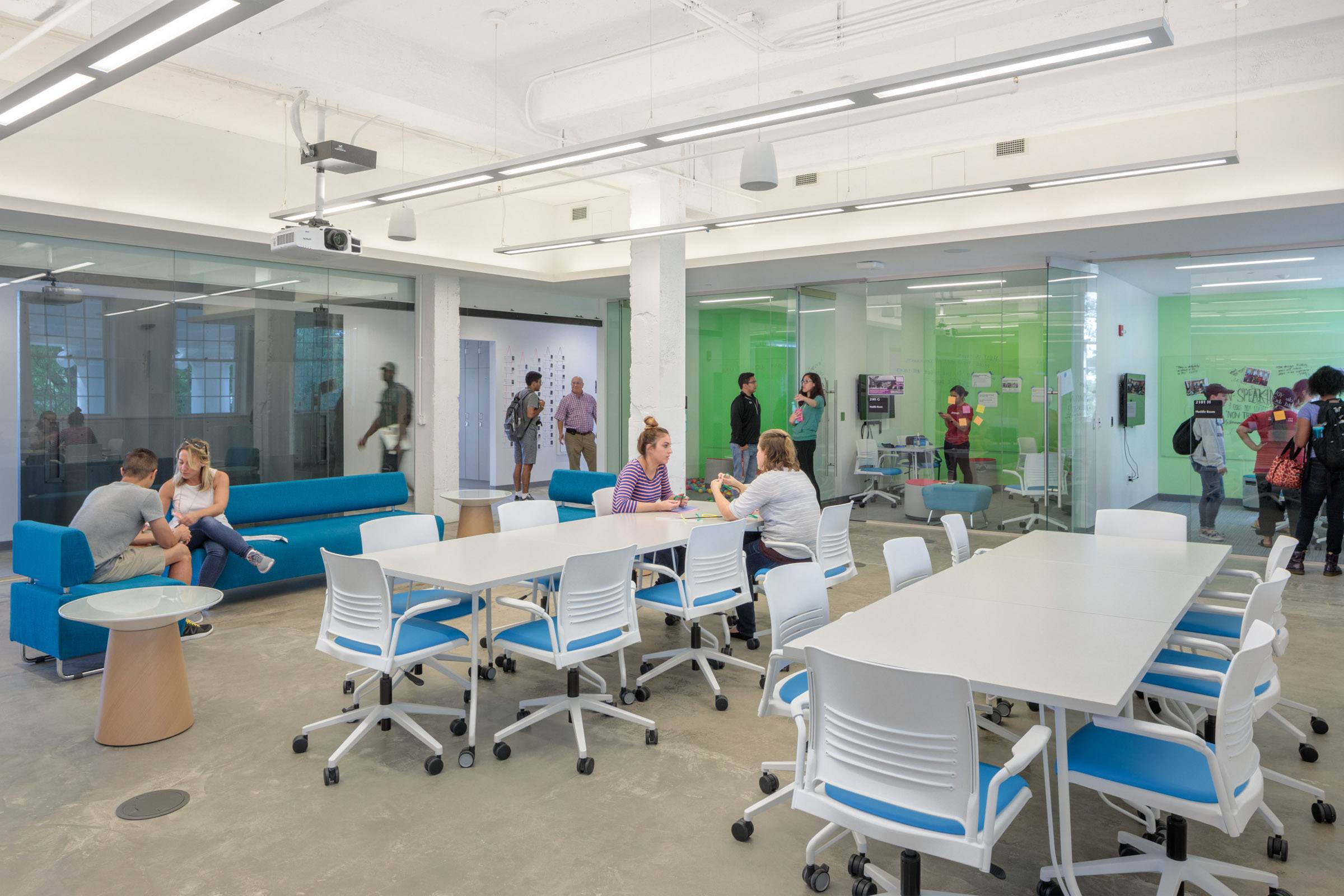As a firm with more than a century’s worth of history, Ayers Saint Gross understands that design must stand the test of time. Working mostly with large institutional clients, we create enduring interior designs from a thoughtful pursuit of functional, beautiful, and durable selections. We balance our established knowledge of the tried and true with an eye towards the industry’s innovations and improvements to produce the best possible results. Here’s how we do it.
1. Developing good relationships with vendors who can work at scale. The Interiors team at Ayers Saint Gross has deep knowledge of quality products and is in contact with the industry’s best representatives. We take the vetting of our vendors seriously. It’s not unlike a job interview. Can your product meet or exceed the benchmarks of our and our clients’ standards of design?
In addition to a product’s performance, aesthetics, and contents, we also assess the principles of the manufacturers and expertise of their representatives. They are among the experts we consult to verify industry standards and to advocate for best design measures. This working relationship helps develop our acumen in materials before we propose solutions to our clients.
In the event of complications during or after installation, our vendors will be proactive in assisting our projects with attainable resolutions. We have to have confidence in them, so our clients can have confidence in us.
2. Building and maintaining a materials library. Even with a lot of electronic options for browsing products, Ayers Saint Gross maintains material libraries in our offices. We’re curious here, and we like to research and investigate. We compare, and we shop for quality.
Besides the ease of having samples on hand, our libraries are interactive ‘sketchbooks’ for materials. Collections continuously evolve, and they literally display our enthusiasm to study and innovate. Since many of our clients have facilities departments with their own materials libraries, we appreciate opportunities to collaborate on current preferences and valuable lessons learned that design standards documents might not provide. Information sharing is a two-way street, too; often clients use our product knowledge and libraries as resources in developing their own collections.
Industry experts also know the importance of our libraries and visit regularly to update holdings and canvass needs. In addition to keeping our libraries current, this contact strengthens Ayers Saint Gross’ voice (among other national design firms) to ensure our clients’ goals are represented as manufacturers improve and develop products. (We are excited about plans to make the libraries easier to navigate and access remotely. Stay tuned!)
3. Finding quality materials and using them correctly. Even quality materials can fail if they are misunderstood or installed poorly. The range of materials with which we work and the significance of the materials we select has never been greater. Our clients’ interests in interior design are many, including: demonstrating an investment in their communities, supporting branding and marketing campaigns, and streamlining maintenance practices. As a result, interior design is constantly changing where options, adaptability, and maintainability are among the indicators of quality work.
Our deep experience in higher education, designing residence halls, libraries, and other high-use buildings, has taught us the importance of longevity and durability. Materials are viewed and touched throughout an occupant’s day, placing our selections front and center for continuous evaluation and assessment of a project’s overall quality.
Clients have long memories, and may retain a bias against certain materials, colors, or designs based on past experiences. Often a material alone does not fail; rather, a non-standard application or low quality installation caused problems. The Interiors team at Ayers Saint Gross investigates materials and their applications to weigh the pros and cons. Our design process includes a systems-based approach to assess a material’s compatibility with other material selections, and evaluate its constructability in combination with other materials.
4. Listening to clients. The pop culture idea of an interior designer is usually someone who sweeps into a meeting with a pre-existing vision. This is pretty much the opposite of how Ayers Saint Gross approaches interiors.
Our design process begins with client-specific research and questions followed by very close listening to what our clients say. If we’re creating a common area in a residence hall, should it be energetic and bright? Or do the students need a more subdued space for relaxation and recharging? Once we understand a client’s goals and hopes, we can use our knowledge of a project’s context, architecture, and cost-modeling to evaluate and advise, envision and create, and transform spaces into places.
We host collaborative moments for our clients to contribute and respond to schematic ideas that help inform the next steps. This nurtures a creative partnership that distinguishes a project as client-specific vs. trend-specific only. Eventually, a fully formed design emerges from team vision. Clients notice when they see their comments realized in a completed project and our work to discuss and listen proves to be a wise investment in (and by) Ayers Saint Gross. This shared effort sparks enthusiasm in the success and endurance of our service and projects.






